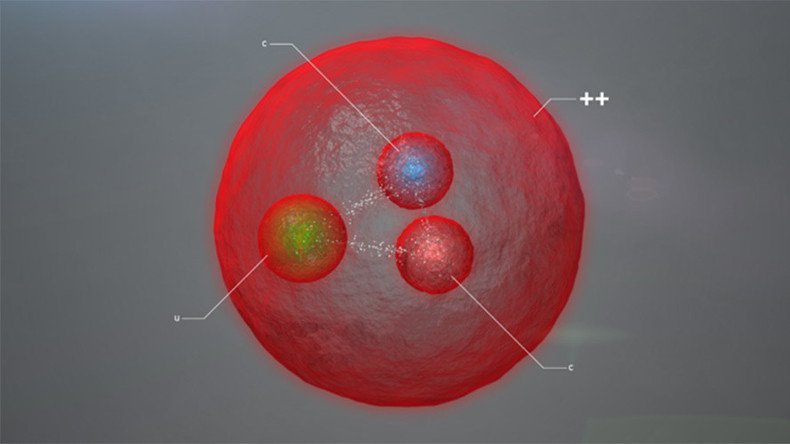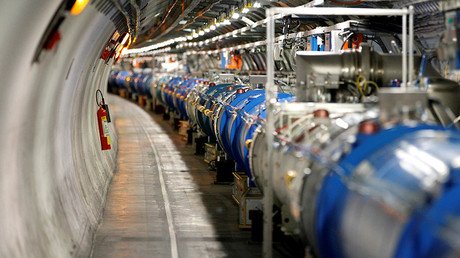‘New frontier’ in physics: Subatomic particle with double dose of 'charm' discovered

A long sought subatomic particle has finally been found, according to physicists at the Large Hadron Collider. Scientists hope the discovery will help to further explain a key force that binds matter together.
High-speed collisions in the Large Hadron Collider – the world's biggest atom smasher – helped to discover a baryon particle called Xi cc, according to a report issued by the University of Glasgow on Thursday.
"LHCb data collected last year contains more than 300 of the new Xi-cc++ particles,” the report says.
“This is the first time that a baryon has been conclusively observed containing two heavy charm quarks and is a new frontier in understanding the strong force that binds quarks together,” Professor of Experimental Particle Physics at the University of Glasgow Paul Soler said of the breakthrough discovery.
A baryon is a subatomic particle made up of quarks which are elementary particles and the fundamental constituent of matter that come in six different types (two light, common types and four heavier types). Xi cc has two heavy quarks – both of which come from a type called “charm” – and a light one.
The two heavy quarks are in a dance resembling the interaction of a star system, with two suns and the third lighter quark circling the dancing pair, Oxford physicist Guy Wilkinson, who was part of the experiment that discovered Xi cc, told AP.
The fact that Xi cc has two heavy quarks is significant in itself, as baryons in the natural world have only one heavy quark, at most. Despite it living only for a fraction of a second, Wilkinson said that is actually an “appreciably long time” in the world of particle physics.
The @LHCbExperiment announces a charming new particle https://t.co/Kf3vcvttO4#EPSHEP2017pic.twitter.com/gXNtAqUtiN
— CERN (@CERN) July 6, 2017
Although Xi cc has previously been theorized by scientists, this marks its first actual discovery and opens a whole new area for scientists to research, according to University of Glasgow physicist Dr Patrick Spradlin who led the research.
“The properties of the newly discovered Xi-cc++ baryon shed light on a longstanding puzzle surrounding the experimental status of baryons containing two charm quarks, opening an exciting new branch of investigation,” Spradlin said.
Sacrifice to Shiva at CERN? Officials launch investigation of 'spoof' ritual https://t.co/JU4mkINN92pic.twitter.com/QtT1KIlw9n
— RT (@RT_com) 19 August 2016
The Large Hadron Collider is operated at the CERN (European Organization for Nuclear Research) complex in Switzerland. The collider, which runs over 27 kilometers (16.7 miles) in length, functions to help scientists understand the mysteries of the universe.















